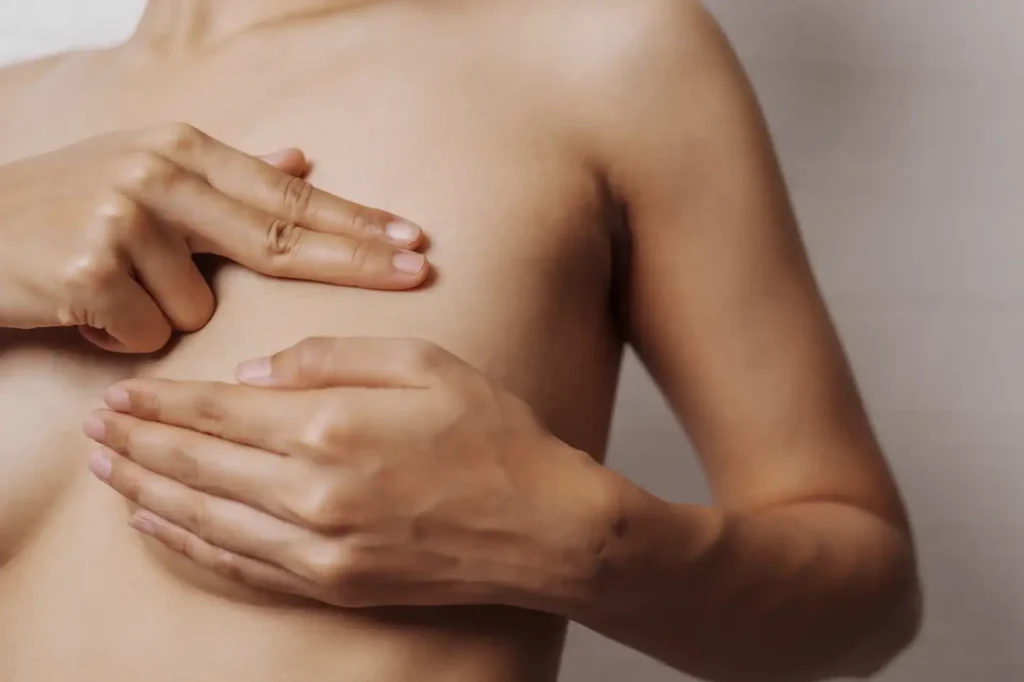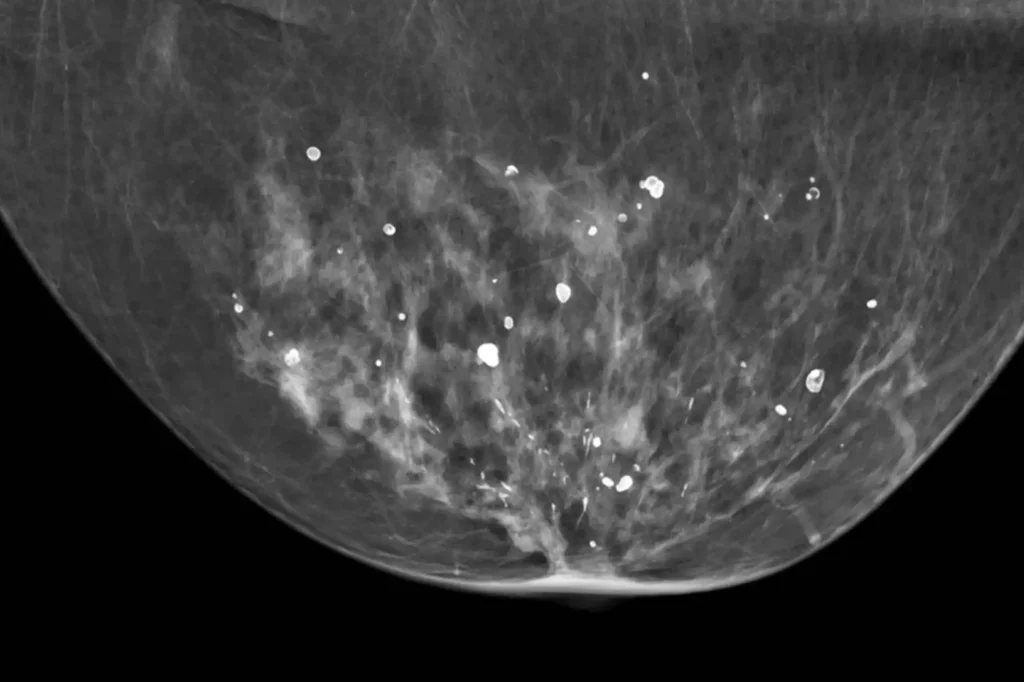This guide explains what breast calcifications are, their causes, how they are detected, and when to seek follow-up care. Understanding the difference between benign and suspicious calcifications helps reduce anxiety and ensures timely treatment if needed. Stay proactive with regular mammograms for peace of mind and better breast health.
What is Calcification in the Breast:
Breast calcifications are small calcium deposits that appear inside the breast tissue and are usually detected on a mammogram, not by touch or self-exam.
If you’ve ever gone for a routine mammogram and received a report mentioning “breast calcifications,” it can sound scary at first. But in most cases, calcifications are not cancerous. They’re actually very common, especially in women over 40. These calcium deposits don’t cause pain and can’t be felt during a breast self-exam. Instead, they show up as tiny white spots or flecks on a mammogram image.
Doctors often monitor calcifications because their shape, size, and pattern can provide clues about whether they are harmless (benign) or if they need further tests to rule out breast cancer or precancerous changes. Understanding what calcifications in the breast mean and when to worry can help you feel more confident about your breast health.
Only certain patterns may suggest early cancer or precancerous changes.
- Advertisement -
Types of Breast Calcifications:
Breast calcifications are generally grouped into two main types: macrocalcifications and microcalcifications. Understanding the difference helps reduce anxiety most calcifications are benign, but radiologists take a closer look when something appears unusual.
- Macrocalcifications are large, coarse calcium deposits often linked to natural aging, past injuries, or inflammation of breast tissue. These are almost always harmless and don’t require further testing.
- Microcalcifications are tiny specks of calcium that may appear in clusters. While most are also benign, certain patterns (like tight clusters or irregular shapes) may raise suspicion, prompting your doctor to recommend more imaging or even a biopsy.

Causes of Calcification in the Breast:
Breast calcifications don’t come from drinking too much milk or taking calcium supplements. Instead, they form due to changes within breast tissue. Rarely, calcifications may be associated with ductal carcinoma in situ (DCIS) or early breast cancer, which is why doctors take their patterns seriously.
- Normal aging: Calcifications often develop as breast tissue ages and breaks down.
- Previous breast injury or surgery: Scar tissue can lead to calcium deposits.
- Inflammation or infection: Known as mastitis, this can sometimes leave calcifications behind.
- Benign breast conditions: Such as cysts or fibroadenomas.
- Duct changes: Calcium can form in milk ducts, especially after menopause.
How Are Breast Calcifications Detected:
You won’t feel calcifications during a self-exam they’re too small. The only way they’re detected is through a mammogram. On the mammogram, they show up as bright white spots. If something looks suspicious, additional imaging like a diagnostic mammogram or even a stereotactic biopsy may be ordered to determine if they are benign or malignant.Radiologists then analyze:
- Size and shape – Are they coarse, round, or irregular?
- Distribution – Do they appear scattered, or clustered in one area?
- Pattern – Linear or branching patterns may need closer evaluation.
Should You Worry About Calcifications:
The short answer: most calcifications are harmless. However, because a small percentage can signal early cancer, radiologists examine them very carefully.
If your mammogram shows benign calcifications, no treatment is needed just routine follow-up. If the findings are uncertain, your doctor may suggest a repeat mammogram in 6 months. If suspicious, a biopsy may be performed.
What matters most is not ignoring your mammogram results. Many women worry unnecessarily, but staying proactive allows doctors to catch any potential problems at a very early and treatable stage.
Treatment and Follow-Up:
There’s no direct “treatment” for breast calcifications unless they are linked to a concerning condition. Instead, doctors focus on monitoring. If a biopsy confirms cancer or precancerous changes, treatment may involve surgery, radiation, or medication depending on the type and stage. The good news is that when calcifications lead to early detection, treatment outcomes are usually very positive.
- Benign calcifications: No treatment needed, just regular screening.
- Uncertain findings: Short-term follow-up mammogram.
- Suspicious calcifications: Biopsy for confirmation.
FAQ
Most frequent questions and answers
No, most calcifications are benign. Only certain patterns may suggest early cancer or precancerous changes.
Not really. They are a natural part of aging and breast changes. What you can do is stay consistent with mammograms for early detection.
No, calcifications don’t cause pain or form lumps. They are only seen on mammograms.
Conclusion:
Understanding what is calcification in the breast can ease a lot of anxiety when reading mammogram reports. These calcium deposits are very common, especially as women age, and in most cases, they are completely harmless. While some patterns may require follow-up tests to rule out early cancer, the majority pose no health risk. Staying consistent with regular mammograms and discussing results with your doctor ensures peace of mind, timely detection, and better overall breast health.








